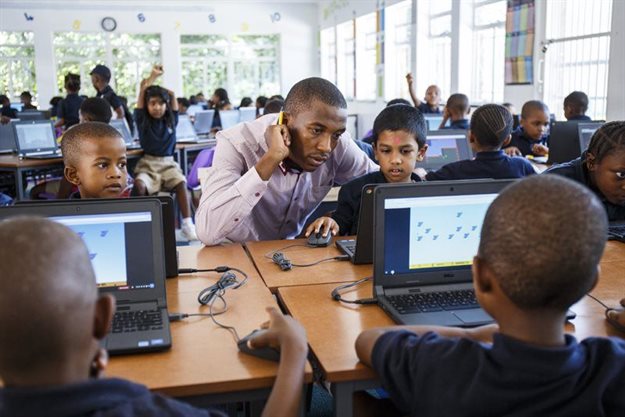South Africa needs a new breed of teachers to meet the challenges of educating our youth in the 21st century - and it starts with giving them the expertise they need to ensure better educational outcomes, says private school network Spark Schools.

Sparks School teacher engaging with a learner
Speaking ahead of World Teachers’ Day on 5 October, Spark Schools Chief of Schools, Bailey Thomson Blake said one of the biggest crises facing South African education was the low levels of literacy. The 2016 Progress in International Reading Literacy (PIRLS) study found that eight out of every 10 Grade 4 learners cannot read for meaning – and changing this will demand teachers who are better prepared, and better equipped to incorporate technology with modern teaching practices.
“The theme of World Teachers’ Day 2019 is ‘Young Teachers: The future of the Profession’, and we believe this is a critical part of creating an educational system that will create literate, high-achieving young people,” said Thomson. “We have to attract promising young teachers to the profession and give them ongoing professional development to provide quality education to all young South Africans.”
According to the UN, one of the main challenges to the right of education worldwide is a shortage of trained and qualified teachers. Sub-Saharan Africa faces the most urgent need in filling the teacher gap: an estimated 17 million teachers are needed, with 70% of countries facing an acute shortage at the primary level and 90% at the secondary level.
However, says Thomson, having qualified and experienced teachers alone does not address the challenge of delivering an effective education. The PIRLS study showed that 93% of teachers of the learners who were assessed had at least a post-secondary degree qualification, and 40% had more than 20 years of teaching experience.
“The bottom line is that even having teachers with teaching qualifications or decades of experience does not guarantee the ability to be able to read for meaning by the age of nine,” she said.
“Reading and writing have to make up a large proportion of a student’s daily timetable, especially in the foundation phase. Instruction in reading comprehension cannot begin only after a child reaches phonetic competency and fluency; it must be integrated from the outset,” said Thomson.
“But to do this, we have to bring our educators into the 21st century. It’s not relying on old-fashioned teaching methods to try and deliver innovative education that makes a difference to our children. We need fresh faces, and for our more experienced teachers, fresh thinking and ongoing learning. That’s the only way we’re going to change our literacy levels as a country and give our youth the future they deserve.”


















